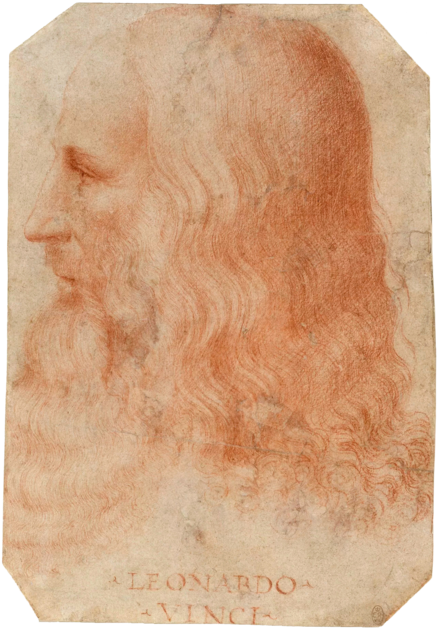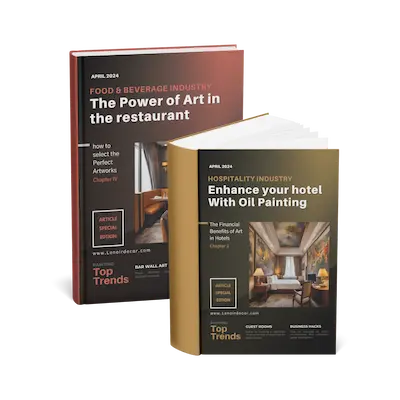Oil paints have a rich history of captivating audiences and can be found hanging on the walls of both public and private collections. But where did this innovative approach originate, and what has maintained its popularity for so long? This blog delves into the history of oil painting, exploring its fascinating journey from ancient caves to the vibrant art scene of Los Angeles.
Content
1. Early Traces: The Unexpected Origins of Oil Painting
2. The European Renaissance: A Golden Age for Oil Painting
3. Oil Painting Techniques: Unveiling the Artist's Magic
4. Why is Oil Painting So Popular? The Enduring Allure
1. Early Traces: The Unexpected Origins of Oil Painting
The story of oil-based paint begins not in Europe, but in distant Afghanistan. The oldest known oil paintings date back to the 7th century AD, discovered in the Buddhist cave complex of Bamiyan. These murals showcase a surprisingly sophisticated use of oil paint, suggesting the technique may have been practiced in Asia for much longer.
Fast forward to Europe in the 12th century, where oil paints were initially used for decorative purposes, often on sculptures and woodwork. However, it wasn't until the 15th century and the Early Netherlandish painters that oil-based paint truly blossomed. Pioneering painters such as Jan van Eyck transformed the medium by creating methods that made bright colors, exacting precision, and a luminous aspect possible that tempera paints, which were the predominant medium at the time, were unable to do.

2. The European Renaissance: A Golden Age for Oil Painting
The Renaissance in Europe witnessed a flourishing of oil-based paints . Italian accomplished artists like as Titian, Leonardo da Vinci, and Michelangelo fully realized the possibilities of the medium, producing a plethora of unique pieces and famous paintings that are still regarded as classic masterpieces that astonish people today. Because oil paints are so versatile, artists may play around with depth of field, light and shadow, and a greater spectrum of emotions while creating portraits, landscapes, and religious settings. Furthermore, those works of art fetch thousands of dollars for their sale.
|
Titian 
Titian, a master of diverse painting styles, significantly influenced Western art through his innovative use of color and versatile approach to portraiture, landscapes, and religious/mythological themes. |
Michelangelo 
Michelangelo, a Florentine master drawing from classical antiquity, was a multi-talented Renaissance artist whose work left an enduring impact on Western art and earned him acclaim as the greatest of his era. |
Leonardo da Vinci 
A Renaissance polymath renowned for his iconic paintings like the Mona Lisa and The Last Supper, as well as his groundbreaking inventions and scientific discoveries. |
3. Oil Painting Techniques: Unveiling the Artist's Magic
Oil painting techniques offer artists a unique level of control and flexibility. Pigments are mixed with drying oils, such as linseed oil, creating a paint that dries slowly. This allows for techniques like:
- Layering: Applying thin translucent layers of paint (glazes) to build up color and depth.
- Blending: Seamlessly merging colors for smooth transitions.
- Impasto: Creating texture with thicker applications of paint.
These techniques allow artists to render their visions with extraordinary realism and detail, in addition to using brushes, palette knives, and other tools.
4. Why is Oil Painting So Popular? The Enduring Allure
Oil-based paint's popularity can be attributed to several factors:
- Richness of Color: Oil paints offer a vibrant and enduring color palette, withstanding the test of time.
- Versatility: The medium allows for a wide range of styles and techniques, from photorealistic to abstract.
- Longevity: When properly preserved, paintings on canvas may last for generations and turn into priceless treasures.
- Tactility: The physical act of manipulating oil paint can be a deeply satisfying experience for artists.
The art scene in Los Angeles is booming, and oil in paints are very important to the city's culture. Here are some of the must-see original paintings in Los Angeles:

- Los Angeles County Museum of Art (LACMA): Home to masterpieces and antique painting by well-known artists such as Rembrandt, Vincent van Gogh, and Monet, LACMA offers a glimpse into the history of oil-based paint.
- The Getty Center: Explore European oil piece of art, valuable painting and expensive paintings from the Renaissance to Post-Impressionism, including works by Titian, Rubens, and van Gogh.
- Norton Simon Museum: This museum features a diverse collection, including oil paintings by European and American artists namely Renoir, Degas, and Sargent.
Visiting these institutions allows you to witness firsthand the beauty and mastery of oil painting.
5. Key takeaways
The history of oil painting is an amazing journey, beginning with its surprising roots in Asia and continuing to enjoy lasting appeal in the art world. This medium continues to inspire artists and captivate audiences, offering a tangible connection to the past and a vibrant platform for artistic expression. Discovering the world of oil paint is a fulfilling experience, regardless of whether you're an art fan or an aspiring artist. Thus, the next time you're at a Los Angeles museum, stop and consider the craftsmanship and history that are captured in these classic oil paintings.






